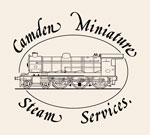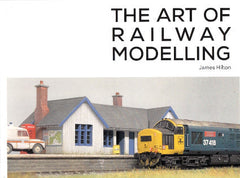The Art of Railway Modelling
Following on from his 2022 "Small Layout Design Handbook", in this book James develops themes and ideas for small layouts that are centred around 'art'. What has this got to do with model railways? Well, quite a lot according to James, who sets out his case in this densely packed book, which is full of ideas and inspiration in equal measure.
How do we talk about our model railways? In his chapter on the craft of model railways James suggests that by dividing our schemes into small sections and considering the motivations and responses to what we have created, we will find ourselves discussing 'art' as much as 'craft'. He draws an interesting parallel between pioneering print from forty odd years ago and today's highly connected world of electronic communication. The chapter explores various 'tricks of the trade' that we might use. These cover a set of different approaches and considerations, each illustrated by a case study of an actual model, including scene composition, selective compression and caricature.
Thinking theatrically, James considers what 'lead actors' we might select as the focus of a model. Locomotives are an obvious choice, but what about other features or aspects? The choice will be linked to our motivations in building the model in the first place - what atmosphere or experience do we seek to share in our model - do these models need to be 'perfect'? James illustrates various locomotives, structures and even an old oak tree as potential 'lead actors'.
'The Stage Set' chapter forms the bulk of the book. Here James considers where our 'lead actors' might perform through a series of individual layout themes and ideas. In many ways an extension of his first book, these schemes cover a wide variety of prototypes, including narrow gauge and industrial layouts and also drawing inspiration from North American prototypes and modellers. Each scheme consists of a page of descriptive text, together with atmospheric sketches, photographs and plans that explore each idea. The general tone is non-prescriptive and thought provoking, with many schemes offering scope for development in different directions.
In his final chapter there is a stunning image of a narrow gauge model, together with thoughts and hopes for how we might all tell our stories through our modelling in the future. Whether you agree with James or not, he makes many interesting points and presents fresh ideas and perspectives, from which we can all take something as we develop and present our own schemes and ideas.
103 landscape format pages. full of colour photographs, drawings and ideas. Paperback.











